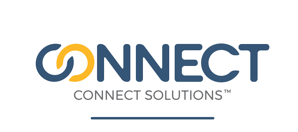There’s a chance that we’re starting to accept that learning in the workplace has changed. We’re beginning to realise that classroom training doesn’t work for everyone.
Download our free guide to find out how to increase productivity in the mobile workplace.
For some, classroom learning in the workplace is a reminder of school, and let’s face it, we don’t all have the fondest memories of school.
The animosity towards our school days might carry through to the day long training sessions sat in a hot stuffy room where the only respite is the coffee breaks.
Finally, we’re moving on and figuring out that this isn’t the only way to teach people.
Adaptive Learning, for example, is a learning & development approach/strategy that caters styles and timeliness of learning material to the individual with the assistance of pocket technology to deliver the content.
In other words, it’s adapting to the individual learning style of your team members so they engage with the content and retain the knowledge.
Adaptive learning comes with it’s own set of benefits for the individual and the company deploying it as a learning strategy, here’s some of those benefits:
1) Time
Adaptive learning is about learning and developing when the time suits and when the training is relevant to the objective or task in hand. Obviously you could say that learning a job an hour before you need to do it is too late, but equally, learning the skills 6 months prior and never using them might be considered too early.
With adaptive learning, an employee can learn the skill in advance and then keep their knowledge fresh by partaking in quizzes or learning new updates through new content.
It’s all about learning when the time is right.
2) It Uses The Technology In Your Pocket
This is arguably a big part of adaptive learning and some definitions pitch the whole method around technology. When adaptive learning is implemented correctly, there shouldn’t be barriers as to the tech that can be used to learn and this means users and team members can learn from the tech in their pockets. They can use their phone or their tablet to learn short snippets of content on the go.
Or they can still use their laptop or desktop if they would rather. Adaptive learning embraces technology to assist learning and means you can learn on the go as you want to.
Remember: Technology is the delivery, not the answer.
3) It’s Flexible
There are a few different ways that the adaptive learning method is flexible. First, you have content. With technology being used, you can provide content in different formats such as videos, text, images, documents and quizzes. All of these ways of learning suit different people and the ability to mix and match the learning styles can give the perfect combinations for someone.
Beyond the content, you have to consider the time flexibility that is provided through adaptive learning. As seen in the example above, employees can be flexible in terms of when they partake in learning and training. If a salesperson has a big pitch coming up, they may want to learn the product specific details in small chunks of learning in the days leading up to the pitch to ensure they remember the right details.
4) It’s Engaging
Whilst classroom style learning and more traditional Learning Management Systems (LMS) still have a role in business environments, they haven’t always been considered the most engaging way of learning.
To ensure knowledge retention from training, an adaptive learning environment can support classroom-training sessions with extra, more engaging content that is relevant to the user’s situation.
For training to work effectively, people need to want to do the training and short snippets of engaging video or gamified quizzes that put training into context can help with this.
5) It’s Rewarding
When investing time into something (such as training), it is good to get something out of it. It doesn’t have to be a physical reward and it doesn’t need to be a bonus, but even a point system with gamified learning can offer reward and encourage employees to learn.
One of the benefits of an employee centered adaptive learning environment is rewards and the effect they have on employee engagement and willingness to take part in training.
6) It’s Progressive
One of the keys to any training is making sure that the trainee feels like they have advanced from the training. Adaptive learning can aid this by using technology to test how much was learnt in a training session or from training content.
Quizzes and gamification can test someone’s knowledge on the go with instant feedback as to how they’ve done. If they do well, they feel that they have learnt something and that they are making progress.
Adaptive learning supports progression through offering extra content in a convenient way.
7) It’s Interactive
An age-old concept is that it’s easier to learn by doing. When you learn to drive, you don’t sit in a room and get told how to drive, you get in a car and you learn by doing.
There is no reason this technique shouldn’t be applied to all learning (within reason – some scenarios require prior knowledge).
Adaptive learning creates a way to test knowledge with context and relevance and provides a platform to create interactive scenarios.
All of these benefits can help improve knowledge retention and increase employee engagement. Adaptive learning provides that flexible and engaging way of learning with a choice of how you learn and when you learn.
Now you know the benefits, find out how to implement your own Adaptive Learning Strategy in our new eBook: How to Transform Business Success with Adaptive Learning in the Enterprise – Download it for free here.


